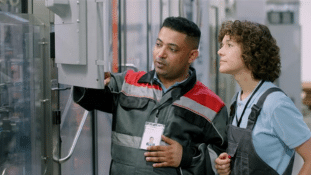

BLOG
BUSINESS CONTINUITY PLANNING AND MISSION CRITICAL SYSTEMS
7/31/24
What is the key to maintaining a successful and resilient business when serious interruptions occur? Business continuity planning for mission critical systems such as IT, electrical service, and HVAC must be in place to establish procedures that expedite recovery in the event of disruptions such as cyber-attacks, loss of power, and natural disasters. Yet an estimated 51% of businesses do not have a formal plan in place to meet emergency threats.
The ability to react quickly is essential to the longevity of any business due to the “it’s a matter of if, not when” factor, proactive avoidance planning should also be implemented. This should go well beyond catastrophic weather events and power outages to cover all risks, including but not limited to:
- Equipment degradation investigation and backup strategies
- Training, talent attrition, and succession planning
- Electrical and safety code compliance
- Forthcoming government mandates
- Market and technology trends
Multi-generational advances in technology are also changing the scale of risk, and along with it, many business models. Not all risks are immediately catastrophic, the additive nature of deferred maintenance and market transformation can catch up to any business with tunnel vision. This can include factors such as:
- Increased competition for real estate
- Resource scarcity and supply chain management
- Government regulation and reporting
- Failure of equipment with long lead times
- Component degradation leading to serious safety events
Businesses are being forced to solve new and more complex problems with fewer resources in the face of inflation, rising energy prices, and inevitable regulation items such as building performance standards for energy efficiency and sustainability. So, is there a realistic solution for this highly dynamic dilemma?
While there is a myriad of items to tackle on the way to becoming fully prepared for any impact on business continuity, with the right mindset and strategy it can become very manageable. Few disruptions happen overnight, and many of these risks can be uncovered and prevented by ensuring your team has its finger on the pulse of asset condition, operating procedures, and industry developments. To get there, however, it requires businesses to employ proactive and creative methods in the evaluation of infrastructure risk and macroeconomic trends. It requires leaders at all levels and in all functional roles to place risk management as a priority decision factor, not just up-front cost. Embracing expert guidance should be much more than a stop gap to address current fires that may block visibility to future challenges. Assembling the proper team that includes external professionals can expose blind spots and reinforce your business continuity plan.





